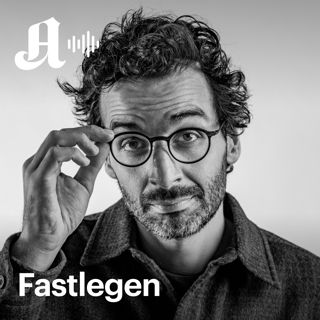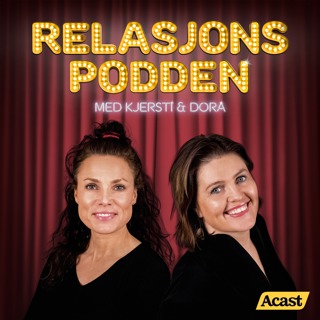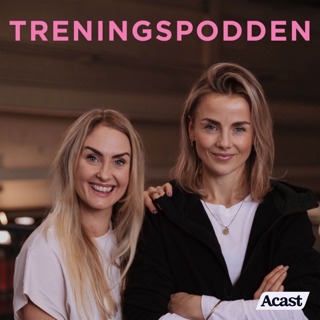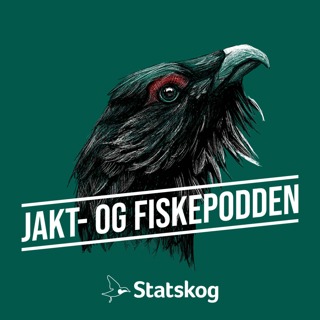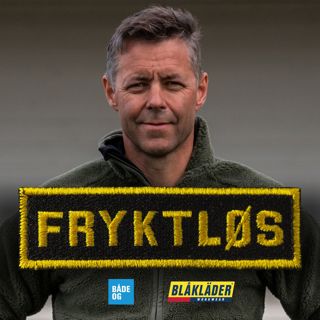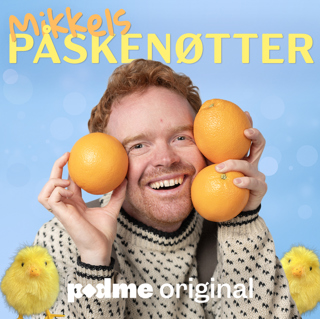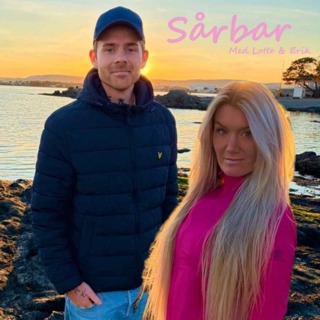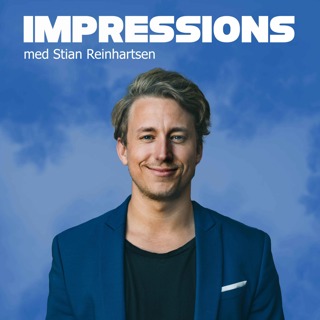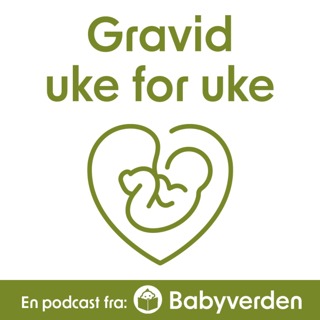
Ep. 298 New Innovations in the Treatment of PE: The Flow Medical Story with Founders Dr. Osman Ahmed and Dr. Jonathan Paul
In this episode, host Dr. Aaron Fritts interviews FLOW Medical cofounders Dr. Osman Ahmed and Dr. Jonathan Paul about how they built a company with the goal of designing a data-driven thrombolytic device that can deliver personalized care for patients with pulmonary embolism. --- CHECK OUT OUR SPONSOR RapidAI http://rapidai.com/?utm_campaign=Evergreen&utm_source=Online&utm_medium=podcast&utm_term=Backtable&utm_content=Sponsor --- EARN CME Reflect on how this Podcast applies to your day-to-day and earn free AMA PRA Category 1 CMEs: https://earnc.me/KikSeM --- SHOW NOTES Dr. Paul, interventional cardiologist, begins by explaining how he and Dr. Ahmed, interventional radiologist, came to work together. Dr. Ahmed came to the University of Chicago shortly after Dr. Paul started a pulmonary embolism response team (PERT) program. Dr. Ahmed, through his IR training, had experience with PE/VTE. They met and decided to combine their knowledge to build the program together. They both saw a need for new catheter directed thrombolytic (CDT) devices in their respective fields. The landscape of thrombectomy device innovation was booming, but they did not see the same innovation happening for CDT. After they both received the COVID vaccine, they were eating at Panera and drew out the idea for their device on a napkin. Neither of them had prior engineering experience and didn’t know how to proceed after this, so they relied on the University of Chicago’s entrepreneurial programs as a starting place. They then did market research and used their own internal research funding to subcontract with an engineering firm. They have been working on the design prototype since, and are conducting animal studies to trial the device. Once they reach design freeze, they will start the regulatory process and NIH 510(k) submission. They also have an NIH SBIR grant for small businesses doing innovative research. They plan to have the device on market in mid 2024. The goal for their device is to make it a catheter that can provide real-time feedback to minimize the complications of both too little or too much thrombolytic therapy. They are installing a sensor on the device that displays how much of the clot is lysed and allows for personalized PE treatment. They hope to incorporate AI into their data management, which they will use to tailor treatment in future patients. --- RESOURCES FLOW Medical: https://www.flowmedical.co
6 Mar 202338min

Ep. 297 Flipping a Hospital-Based IR Practice with Dr. Sebouh Gueyikian
In this episode, our host Ally Baheti speaks with interventional radiologist Dr. Sebouh Gueyikian about elevating the scope of IR procedures and leadership techniques to lead successful change within an IR/DR practice. --- CHECK OUT OUR SPONSOR Boston Scientific Ranger DCB https://www.bostonscientific.com/en-US/medical-specialties/vascular-surgery/drug-eluting-therapies/ranger.html?utm_source=oth_site&utm_medium=native&utm_campaign=pi-at-us-de_portfolio-hci&utm_content=n-backtable-n-backtable_site_ranger_1_2023&cid=n10012340 --- SHOW NOTES Dr. Gueyikian first discusses his career path, from his academic training, to building an IR department in a suburban hospital, to having a chief role within a multicenter practice. All of these roles were taken on in the efforts to grow different IR practices. With each job transition, he notes that it is important to not only pay attention to who was asking him to change the department, but also who had the power to allocate resources and support for his changes. Discrepant goals between diagnostic radiology (DR) partners and hospital administrators present frustrating situations, so it is recommended to outline these challenges before signing on. Additionally, Dr. Gueyikian speaks about the importance of defining boundaries for your IR service. For example, simple procedures that can be done under basic fluoroscopy do not make the best use of the IR suite, so they should be performed at bedside or within the DR setting. Prioritizing IR time and space for complex procedures ensures that resources are being put to good use and fight burnout among IRs and staff. In terms of increasing efficiency. Dr. Gueyikian ensures that there are pre-procedural protocols that can be widely disseminated. He says that it is important to establish mutual expectations for lab tests and supplies needed before each type of procedure, in order to enhance patient safety and job satisfaction for everyone on the team. Additionally, advance communication with colleagues about scheduling cases for each day can help ensure that workload is fairly distributed. Finally, we discuss ways to negotiate with resistors to change, whether these are DRs, hospital administrators, or referring specialists. Dr. Gueyikian highlights the utility of re-framing clinical errors as opportunities for change. Addressing the gaps in the status quo, while also making the effort to understand resistors’ concerns, can increase support for your ideas.
3 Mar 202354min

Ep. 296 Building an Ambulatory Surgery Center with Dr. Sean Hislop
In this episode, cohosts Dr. Aaron Fritts and Dr. Krishna Mannava interview vascular surgeon Dr. Sean Hislop about building an ambulatory surgery center, including where to purchase property, how to plan your build, and how to prepare for expansion. --- CHECK OUT OUR SPONSOR Medtronic OBL https://www.medtronic.com/obl --- SHOW NOTES We begin by discussing Dr. Hislop’s current practice in Charleston, South Carolina. He is part of a group of eight vascular surgeons, and is also chief of vascular surgery at a local hospital. Their group has 8 offices, 2 of which are outpatient based labs (OBLs). They are currently working on building an ambulatory surgery center (ASC) that is projected to open in April 2023. Dr. Hislop describes how ownership of the ASC was determined. Five interested partners in their group used their personal funds (5 equal parts) and in turn all 5 are on the board of directors. They keep 100% of their profits and work with a local banker that they have built a trusted relationship with from their prior experience with OBLs. To plan for future expansion, each partner will devote a certain percentage of their shares which will go into a pot to provide shares for future partners to buy in. When it came to deciding where to buy property and build their ASC, they factored in weather, price, and proximity to patients. They did market research to evaluate where to build that would be close to their target patient population. They were able to find an affordable property in an area with a high concentration of retirees. Their LLC leased the land, and their practice leased space from the building owner. They built out one procedure room with a portable 9900 OEC C-arm, 4 prep and 4 recovery bays where patients can stay for up to 48 hours. South Carolina is a certificate of need (CON) state, meaning they had to apply for a CON to do all their procedures. Their current CON is procedure specific, not specialty specific, though it does not currently include coronary interventions. This allows them to bring in interventional cardiologists, interventional radiologists or podiatrists in the future. Lastly, Dr. Hislop talks about the hiring process in the ASC. Throughout the COVID-19 pandemic, there has been a huge surge in travel nursing, which has caused retention problems throughout the country. Dr. Hislop remarks that he has recently seen the tides shift back towards normal employment. He believes that in order to recruit and retain high quality staff, it is vital to understand the market and offer competitive salaries. Some of the benefits to working at an ASC instead of a hospital is the lack of nights, weekends, and call coverage. For Dr. Hislop and his partners, they believe that efficiency and work satisfaction are more important than a big financial outcome, which is why they are passionate about building this ASC. They believe it will provide a much better patient experience while also keeping physicians and staff happy. --- RESOURCES Ep. 193: Managing Supplies in your Outpatient Facility https://www.backtable.com/shows/vi/podcasts/193/managing-supplies-in-your-outpatient-facility Ep. 202: Staffing the OBL https://www.backtable.com/shows/vi/podcasts/202/staffing-the-obl
27 Feb 202344min

Ep. 295 Building an OBL Within an IR/DR Group Part 2 with Dr. Don Garbett and Dr. Nicholas Petruzzi
In the second part of this series, host Ally Baheti interviews interventional radiologists Donald Garbett and Nicholas Petruzzi about starting their outpatient based labs (OBLs) within a combined IR/DR group. They discuss the rewards of having an outpatient practice and how they navigate challenges that arise during the practice-building journey. --- CHECK OUT OUR SPONSORS BD Rotarex Atherectomy System https://www.bd.com/rotarex Surmodics Sublime Radial Access Platform https://sublimeradial.com/ --- SHOW NOTES We begin by discussing real estate decisions and the construction process. Dr. Petruzzi, started his first two OBLs within the same space as his group’s existing imaging center. While this was cost effective, it also sacrificed the ability to have an ideal layout. As he built more practice locations, he acquired new real estate. Dr. Garbett purchased and re-purposed a property that had previously been a plastic surgery practice. He notes that supply issues are common, and construction usually takes longer than expected. Additionally, the doctors talk about navigating different vendor relationships. They both agree that there is a certain number of vendors that strikes a balance between an appropriate variety of devices and negotiating power with each vendor. They also discuss their choice in EMR provider and different functions that are important to streamlining workflow. Next, we shift to talking about marketing a new practice. Early in the practice lifetime, they emphasize that in-person marketing directed towards referrers is the best way to form long-lasting relationships. Dr. Petruzzi has since hired a marketing team that has specific knowledge of patient populations. His practice’s participation in clinical trials also provides a marketing edge, since patients can have access to novel treatments. One of the biggest challenges to building a practice is finding and training staff. Dr. Garbett highlights the need to communicate with the nursing team prior to initiating procedures. Communication of expectations, sedation level, and post-operative care guidelines can help ensure that a procedure runs smoothly. Dr. Petruzzi relies on procedure and transfer protocols to standardize patient care and manage urgent and emergent events. Finally, both doctors speak about the multidisciplinary nature of their practices. Dr. Petruzzi’s OBL is a collaboration between IR and vascular surgery, while Dr. Garbett’s OBL synthesizes IR, MSK radiology, and physical therapy. --- RESOURCES Building an OBL Within an IR/DR Group, Part 1: https://www.backtable.com/shows/vi/podcasts/213/building-an-obl-within-an-ir-dr-group Atlantic Medical Imaging: https://www.atlanticmedicalimaging.com/ ReNew Institute: https://reneweugene.com/ SIR Practice Development Resources https://www.sirweb.org/practice-resources/practice-development-new/ Outpatient Endovascular & Interventional Society (OEIS): https://oeisweb.com/ Nicholas Petruzzi Twitter: https://twitter.com/mdpetruzzi Donald Garbett Twitter: https://twitter.com/DonGarbettMD
24 Feb 202352min

Ep. 294 How to Implement Advanced Vascular Ultrasound Techniques in Your Practice with Dr. Mary Costantino and Dr. Miguel Montero-Baker
In this episode, guest host and vascular technologist Jill Sommerset interviews Dr. Mary Costantino (interventional radiologist) and Dr. Miguel Montero-Baker (vascular surgeon) about their perspectives on an ultrasound-first approach to diagnosing and planning treatment for critical limb-threatening ischemia (CLTI). --- CHECK OUT OUR SPONSORS Reflow Medical https://www.reflowmedical.com/ Boston Scientific Drug Elution https://www.bostonscientific.com/en-US/medical-specialties/vascular-surgery/drug-eluting-therapies.html?utm_source=oth_site&utm_medium=native&utm_campaign=pi-at-us-de_portfolio-hci&utm_content=n-backtable-n-backtable_site_portfolio_1_2023&cid=n10012334 --- SHOW NOTES To begin, each doctor shares how ultrasound fits into their practice philosophy. Dr. Costantino is the sole practitioner in her outpatient-based catheterization lab, and she finds that ultrasound provides an opportunity for her to connect with patients and communicate their diagnoses and options in a straightforward manner. She also recognizes the value of investing in advanced ultrasound training for her vascular technologists and for herself, so the practice can function cohesively and focus on providing patient-centered care. On the other hand, Dr. Montero-Baker speaks about the utility of ultrasound in practices across the globe, particularly in resource-limited settings. Additionally, he describes the need for the longitudinal follow up needed to fight this chronic disease process, as well as the need to manage holistic aspects of CTLI such as proper nutrition, wound care, and orthotics. He is currently building a clinical center that will provide these aspects. We take a moment to reflect on the power of social media as a unifying force for a like-minded “global tribe” of vascular specialists. All three guests can recall numerous instances in which they were inspired by another practitioner, or they were contacted and asked for advice by others. Dr. Costantino adds that social media has helped her realize that there is a strong need for collaboration between interventional radiologists and vascular surgeons, in order to generate treatment options and provide quality patient care. She speaks about the importance of learning from and trusting other specialties. To wrap up the episode, we examine how innovation in ultrasound technology has largely stagnated with the advent of other imaging modalities and opportunities to better incorporate ultrasound into CLTI care. Dr. Costantino encourages vascular specialists to seek out ultrasound training and let patient symptoms and quality of life guide treatment decisions. Dr. Montero-Baker believes that change is required on the systemic level and he advocates for a move towards value-based care. --- RESOURCES Ep. 90- Pedal Acceleration Time for Limb Salvage: https://www.backtable.com/shows/vi/podcasts/90/pedal-acceleration-time-for-limb-salvage Ep. 229- Ultrasound Series: First Line Imaging for CLTI: https://www.backtable.com/shows/vi/podcasts/229/ultrasound-series-first-line-imaging-for-clti Ep. 241- Emerging Techniques of Advanced Ultrasound in No Option CLTI Patients: https://www.backtable.com/shows/vi/podcasts/241/emerging-techniques-of-advanced-ultrasound-in-no-options-clti-patients Ep. 155- The Butterfly Story: https://www.backtable.com/shows/vi/podcasts/155/the-butterfly-story Advanced Vascular Centers: https://advancedvascularcenters.com/ Jill Sommerset Twitter: https://twitter.com/JillSommerset Mary Costantino Twitter: https://twitter.com/drcostantino1 Miguel Montero-Baker Twitter: https://twitter.com/monteromiguel Society for Vascular Ultrasound (SVU): https://www.svu.org/ American Vein and Lymphatic Society (ALVS): https://www.myavls.org/
22 Feb 202359min

Ep. 293 Advanced Pelvic Venous Duplex: Utility of Vascular Ultrasound with Dr. Kathleen Gibson
In this episode, guest host and vascular technologist Jill Sommerset interviews Dr. Kathleen Gibson, vascular surgeon and president of the American Vein and Lymphatic Society, about the role of RVTs and venous ultrasound in the diagnosis and treatment of pelvic venous disorders. --- CHECK OUT OUR SPONSORS Medtronic Abre Venous Stent https://www.medtronic.com/abrevenous Boston Scientific Eluvia Drug-Eluting Stent https://www.bostonscientific.com/en-US/medical-specialties/vascular-surgery/drug-eluting-therapies/eluvia.html?utm_source=oth_site&utm_medium=native&utm_campaign=pi-at-us-de_portfolio-hci&utm_content=n-backtable-n-backtable_site_eluvia_1_2023&cid=n10012337 --- SHOW NOTES We begin by discussing Dr. Gibson's career. She was the first woman to complete a vascular surgery fellowship, which was in 2001. Her training, like most, was very arterial focused at the time. She then moved into the private practice space while still completing clinical research. She began to realize that more of her patients had venous disease than arterial. For example, she saw many more patients with varicose veins than abdominal aortic aneurysms. Pelvic venous disorders (PeVD) in particular, remain poorly studied and understood. She became interested in this patient population because she saw many women present with pelvic pain and varicose veins after multiple targeted saphenous vein treatments. She realized this was because the source of the problem, the pelvic veins, were being left untreated. Dr. Gibson developed a varicose vein classification that is being disseminated around the world, and has been translated into multiple languages. It is called the SVP Classifier (Symptoms-Varices-Pathophysiology). It was developed to be used in conjunction with CEAP (Clinical-Etiology-Anatomy-Pathophysiology) classification for venous disease. There is an app available, as well as a workbook that can be used to claim CME. It is a tool that can aid providers and vascular technologists alike when working up PeVD. Lastly, Dr. Gibson reviews her workup of a patient with pelvic pain. Before undergoing ultrasound and vascular workup, it is important to think of other causes of pelvic pain in women of certain ages. In young women, she always ensures patients have seen a gynecologist, as endometriosis is the most common cause of pelvic pain in this group. If they are post-menopausal and present with new onset pain, she also has the patient see a gynecologist to rule out malignancy. Finally, if the patient is postpartum, she loops in a pelvic floor physical therapist because myofascial pain from pregnancy can mimic pain from PeVD. For the vascular workup, she begins with an ultrasound performed by a vascular technologist. She meets with the patient to discuss symptomatology and impacts on quality of life. If PeVD is found on US but the patient has minimal pelvic symptoms, she does not pursue treatment. She treats the patient, not the imaging. If symptoms are bad enough, she will move forward with stenting (for obstruction) or embolization (for varicosities). For embolization patients, there is no routine follow up unless there is a complaint. For stenting in NIVL (non-thrombotic iliac vein lesion) patients, she follows patients with annual US for a couple years. For post-thrombotic stenting she sees patients for US every 6 months, and then annually, as re-thrombosis is always a concern in these patients. --- RESOURCES American Vein and Lymphatic Society: https://www.myavls.org Society for Vascular Ultrasound: https://www.svu.org SVP Classifier App: https://www.myavls.org/svp-classification.html Pelvic ultrasound technique paper: https://journals.sagepub.com/doi/abs/10.1177/0268355516677135?journalCode=phla UIP 2023: https://www.myavls.org/annual-congress-2023.html Twitter: @JillSommerset @KathleenGibson6
20 Feb 202340min

Ep. 292 Dialysis Interventions with Drug-Coated Balloons, Covered Stents and More with Dr. Ari Kramer
In this episode, Dr. Chris Beck interviews vascular access surgeon Dr. Ari Kramer about his management of arteriovenous (AV) access for dialysis patients. We cover his preferred imaging for identifying and deciding to treat stenoses, the protracted angioplasty technique, and the evolution of research in drug coated balloons (DCB) and stent grafts. --- CHECK OUT OUR SPONSORS Medtronic Chocolate PTA Balloon https://www.medtronic.com/peripheral BD Rotarex Atherectomy System https://www.bd.com/rotarex --- SHOW NOTES Dr. Kramer starts by describing his vascular access practice. He is the sole operator within a hospital-based practice where he creates and maintains AV access. When evaluating a patient for possible intervention, duplex ultrasound, physical exam findings, patient history, and information from the dialysis center all play roles in determining whether the patient is eligible for a fistulagram. Dr. Kramer offers fistulagram tips: he obtains access above the arterial anastomosis in order to avoid occlusion of outflow, and he first shoots contrast into the venous tract first and works his way up to the arterial system. Depending on the findings of the fistulagram, stenotic lesions in the venous outflow tract can be treated. Dr. Kramer generally treats the lesion if the stenosis limits flow by more than 50%. Additionally, he treats any lesion resulting in a luminal diameter of 2mm or less. In an AV fistula circuit, Dr. Kramer describes his procedure, which is largely informed by the most current clinical trials. He first employs the FLEX Vessel Prep system to reduce circumferential fibromuscular tension. Next, he performs protracted plain old balloon angioplasty (POBA) for 90 seconds. This helps Then, he re-images the vessel to ensure there was no injury and utilizes a DCB to deliver paclitaxel. We discuss the clinical trials outcomes of the two current DCBs that have been approved for use in AV management, IN.PACT and Lutonix. Dr. Kramer also notes the significant cost of DCBs and lack of access to treatment for the most at-risk patients. He encourages clinicians to unite to advocate for increased reimbursement for this treatment that has been proven to show the highest standard of care. Additionally, we address treatment of non-autogenous AV circuits with stent grafts. Dr. Kramer prefers self-expanding covered stents, such as Viabahn or Covera, since they are conformable and resistant to kinks. Overall, Dr. Kramer emphasizes the importance of the operator staying up to date on clinical trials that show data for diverse tools with various indications, knowing their own skill and comfort, and incorporating the best treatments based on their patient and practice context. --- RESOURCES Ep. 139 AV Fistula Graft Management: https://www.backtable.com/shows/vi/podcasts/139/av-fistula-graft-maintenance FLEX Vessel Prep System: https://www.venturemedgroup.com/ KDOQI Clinical Practice Guideline for Vascular Access, 2019 Update: https://www.ajkd.org/article/S0272-6386(19)31137-0/fulltext Fahrtash, F., Kairaitis, L., Gruenewald, S., Spicer, T., Sidrak, H., Fletcher, J., Allen, R., & Swinnen, J. (2011). Defining a significant stenosis in an autologous radio-cephalic arteriovenous fistula for hemodialysis. Seminars in dialysis, 24(2), 231–238. Haskal, Z. J., et al. (2010). "Stent graft versus balloon angioplasty for failing dialysis-access grafts." New England Journal of Medicine 362(6): 494-503. Bard Peripheral Vascular. Covera vascular covered stent instructions for use. Rev.4 / 08-18. http://www.bardpv.com/eifu/uploads/BAWB05872R4-Covera-Vascular-Covered-Stent-IFU.pdf. The Fight Doctors: https://thefightdoctors.com/about/ Find this episode on BackTable.com for all resources mentioned in this podcast, including references to journal articles.
17 Feb 20231h 4min

Ep. 291 Percutaneous Creation of a Distal Deep Venous Arterialization (dDVA) with Dr. August Ysa
In this episode, host Dr. Sabeen Dhand interviews Dr. August Ysa, vascular surgeon in Spain, about distal deep venous arterialization, including indications, patient selection, and how to perform his gunsight technique. --- CHECK OUT OUR SPONSORS Viz.ai https://www.viz.ai/ BD Rotarex Atherectomy System https://www.bd.com/rotarex Reflow Medical https://www.reflowmedical.com/ --- SHOW NOTES We begin by discussing his training and background. Initially trained in Barcelona before moving to Bilbao as a young vascular surgeon. He came to the US briefly to train at Montefiore and Houston Methodist. When attending the LINNC in Europe one year he saw a live endovascular case, which is when he decided to devote his career to peripheral arterial disease (PAD), specifically below the knee (BTK) and below the ankle (BTA) interventions. He currently works with Dr. Marta Lobato, and they have done around 25 combined deep venous arterializations (DVAs) in their practice. They love this technique because it gives someone previously faced with amputation a new chance. It is a technique to reroute blood flow to get oxygen to a wound and promote wound healing. There are two types of DVA: proximal DVA, which is done closer to the origin of the posterior tibial artery (PTA), and distal DVA, which is at the level of the ankle, and usually also involves the PTA. Thus far, it is unknown which technique is better in terms of limb salvage, and data shows both techniques yield 60-70% limb salvage rates. One advantage to distal DVA is lower rates of post-DVA storm, a type of ischemic steal syndrome. Availability of devices and lower cost also make distal DVA more appealing. DVA is never the first option, traditional recanalization techniques are always explored first. Wounds that are not candidates for DVA are large infected wounds or areas of necrotic tissue. This is because it takes 6-8 weeks to establish the newly created connection, and if the wound is already past the point of healing, DVA will not help. Other reasons DVA can fail is due to choosing the wrong candidates. Mean wound healing time after DVA is 4-7 months, so patients need to be able to commit to close follow up and wound care, and they must have the social support to be compliant with frequent clinic visits. Finally, Dr. Ysa explains his venous arterialization simplification technique (VAST). Before the procedure, he always does a venous ultrasound to rule out prior DVT and evaluate the status of the main veins of the foot. He uses two snares via the gunsight approach, which most IRs are familiar with from TIPS procedures. It involves overlapping two snares and then performing a through and through puncture from the PTA to the posterior tibial vein (PTV). The PTA is generally used over the anterior tibial or the peroneal artery due to its robust connections with the lateral plantar and the plantar arch. He then performs balloon angioplasty (BA) on the PTV. He initially uses the PTA for sizing, but generally goes bigger, between 4-5mm. For valves, he usually does regular BA but will sometimes use a cutting balloon. Two weeks post-DVA he gets an ultrasound, and at one month he gets an angiogram to evaluate the new tract. He has his patients take a single antiplatelet and a blood thinner after the procedure. He considers DVA to have failed if there is progression of wound necrosis. --- RESOURCES Dr. Ysa LinkedIn: https://www.linkedin.com/in/august-ysa-56a99a174/ YouTube DVA Webinar with Dr. Ysa and Dra. Lobato: https://www.youtube.com/watch?v=kDW5Rg5g49I Ep. 93 - DVA for CLI with Dr. Fadi Saab: https://www.backtable.com/shows/vi/podcasts/93/deep-venous-arterialization-for-cli Live Interventional Neuroradiology, Neurology and Neurosurgery Course (LINNC): https://www.linnc.com Patterns of Failure in DVA Paper: https://www.clijournal.com/article/patterns-failure-deep-venous-arterialization-and-implications-management
13 Feb 202359min


